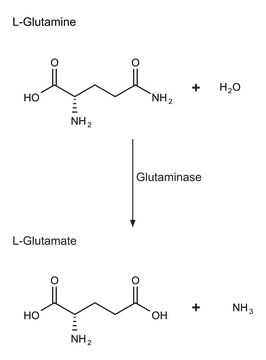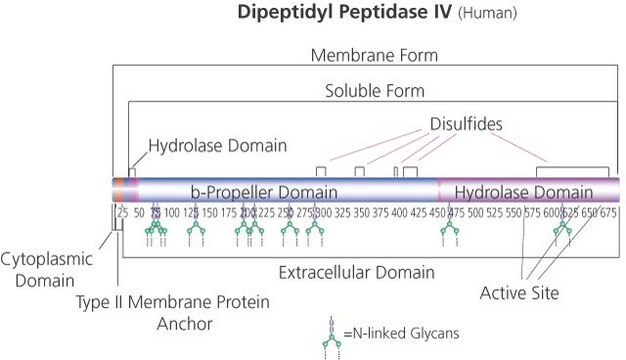H7658
Heat Shock Protein 25 from mouse
recombinant, expressed in E. coli, buffered aqueous solution, ≥90% (SDS-GE)
Synonym(s):
HSP 25
Sign Into View Organizational & Contract Pricing
All Photos(1)
About This Item
UNSPSC Code:
12352202
NACRES:
NA.32
Recommended Products
biological source
mouse
Quality Level
recombinant
expressed in E. coli
Assay
≥90% (SDS-GE)
form
buffered aqueous solution
UniProt accession no.
shipped in
dry ice
storage temp.
−70°C
Gene Information
mouse ... Hspb1(15507)
Application
Heat shock protein 25 from mouse has been used to prevent the degradation of proteins during sample preparation for proteome analysis.
Biochem/physiol Actions
HSP25 (heat shock protein 25) from mouse is a chaperone which is required for cell protection, chemo-resistance, tumorigenicity, protection from cell death. Absence of HSP25 in mouse impairs wound healing rate. HSP25 is also referred to as HSPB1 (heat shock protein β-1).
Physical form
Solution in 20 mM Tris HCl, pH 7.5, 10 mM NaCl, 1 mM EDTA, 1 mM β-mercaptoethanol
Storage Class Code
10 - Combustible liquids
Certificates of Analysis (COA)
Search for Certificates of Analysis (COA) by entering the products Lot/Batch Number. Lot and Batch Numbers can be found on a product’s label following the words ‘Lot’ or ‘Batch’.
Already Own This Product?
Find documentation for the products that you have recently purchased in the Document Library.
Yasuhiro Kuramitsu et al.
Anticancer research, 35(6), 3217-3221 (2015-05-31)
Tumor progression is one of the most serious issues to overcome cancer disease. As a model of inflammation-induced tumor progression, we used the regressive murine fibrosarcoma cell clone QR-32 and the progressive malignant clone QRsP-11, that was derived from QR-32.
Denise I Jacobs et al.
Fungal genetics and biology : FG & B, 46 Suppl 1, S141-S152 (2008-10-01)
The filamentous fungus Aspergillus niger is widely exploited for industrial production of enzymes and organic acids. An integrated genomics approach was developed to determine cellular responses of A. niger to protein production in well-controlled fermentations. Different protein extraction methods in
Jonathan Crowe et al.
PloS one, 8(10), e77383-e77383 (2013-10-22)
There is large literature describing in vitro experiments on heat shock protein (hsp)B1 but understanding of its function in vivo is limited to studies in mice overexpressing human hspB1 protein. Experiments in cells have shown that hspB1 has chaperone activity
K Engel et al.
Biomedica biochimica acta, 50(9), 1065-1071 (1991-01-01)
A hybrid protein containing the N-terminal part of the murine stress protein hsp25 (amino acids 1 to 110) and the C-terminal part of the human stress protein hsp27 (amino acids 111 to 208) was expressed in E. coli using a
Our team of scientists has experience in all areas of research including Life Science, Material Science, Chemical Synthesis, Chromatography, Analytical and many others.
Contact Technical Service







